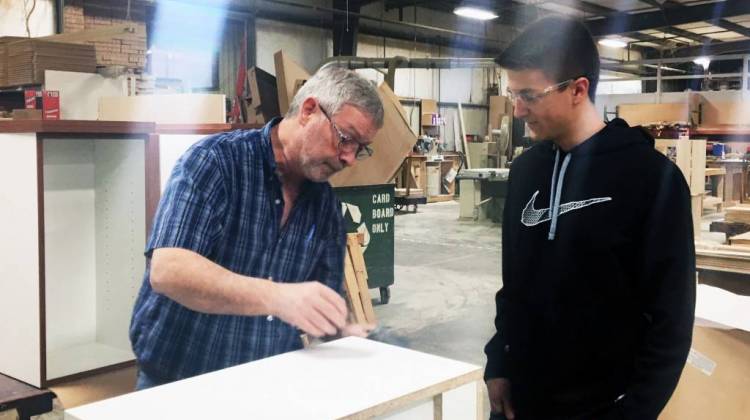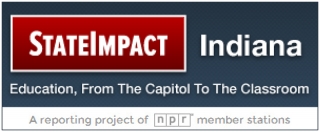
Caleb Pierson looks over a cabinet project he designed for Heartwood Manufacturing. Pierson is a graduate of a program run through Batesville High School, that helps students get manufacturing skills while still in high school.
Claire McInernyIndiana has open manufacturing and construction jobs, but not enough workers with the training to fill them.
The Indiana Institute for Working Families released a new report this month on some of the biggest challenges for people who want to go back to school to earn credentials.
Andrew Bradley is the senior policy analyst for the institute and says more than a million jobs will open in the next decade that require specific training. And most are in manufacturing and construction.
“In the old days you might be able to get by with a high school diploma and a strong back,” Bradley says. “Now it’s going to take additional education and training.”
Bradley’s report finds the most common barriers for people who want to enroll in training programs are: tuition costs, childcare costs, access to transportation and Internet access.
It also reports some state and federal funding to help potential students with food security and transportation is not currently used.
A bill signed into law this session asks the State Board of Education to expand programs encouraging more workforce development.
 DONATE
DONATE










 Support WFYI. We can't do it without you.
Support WFYI. We can't do it without you.